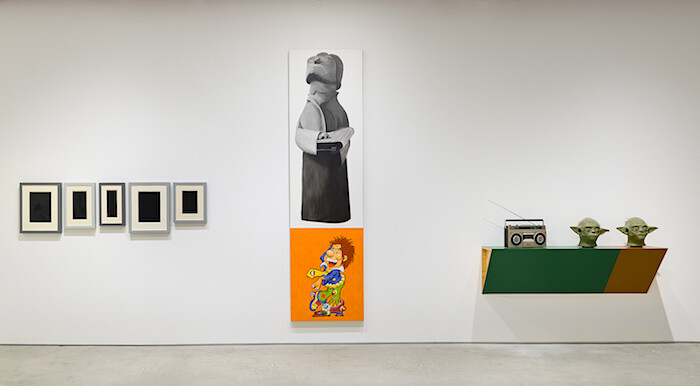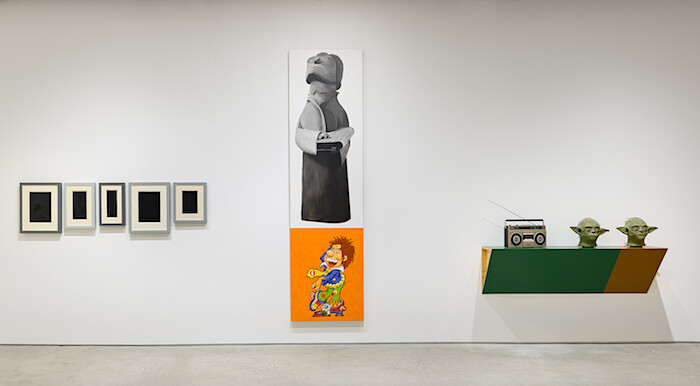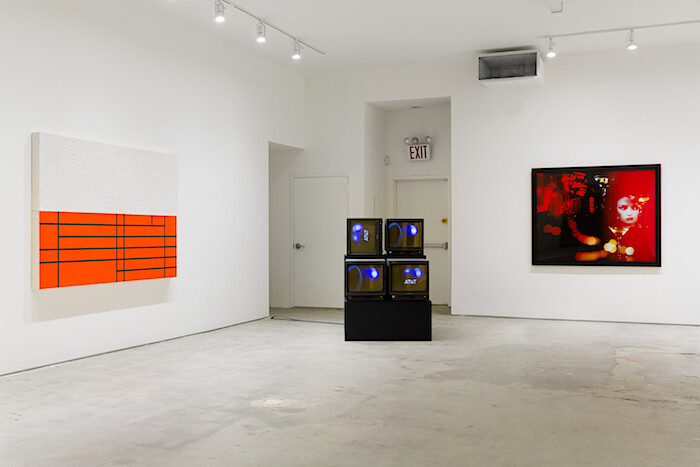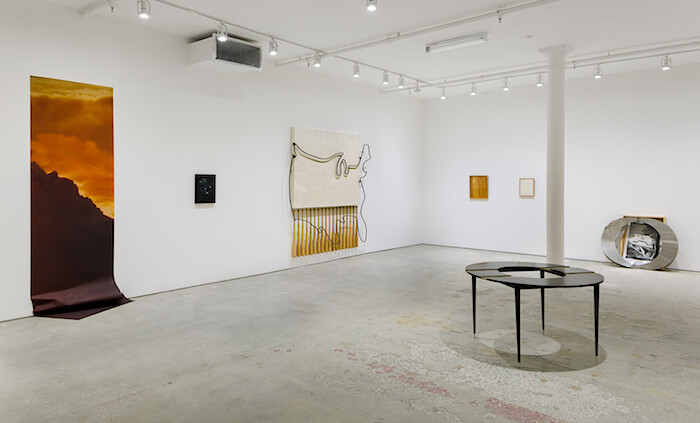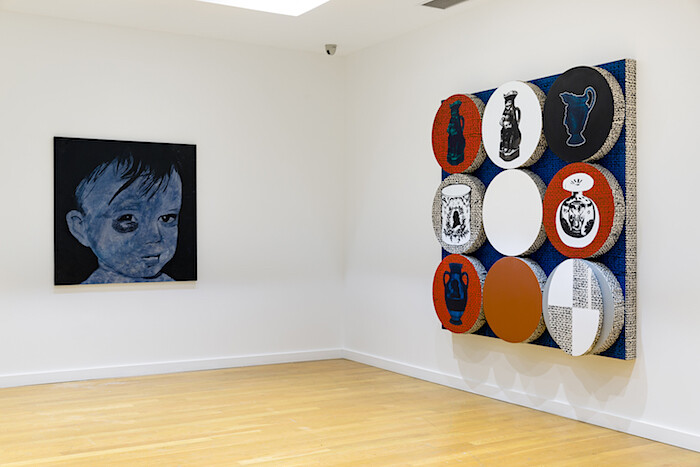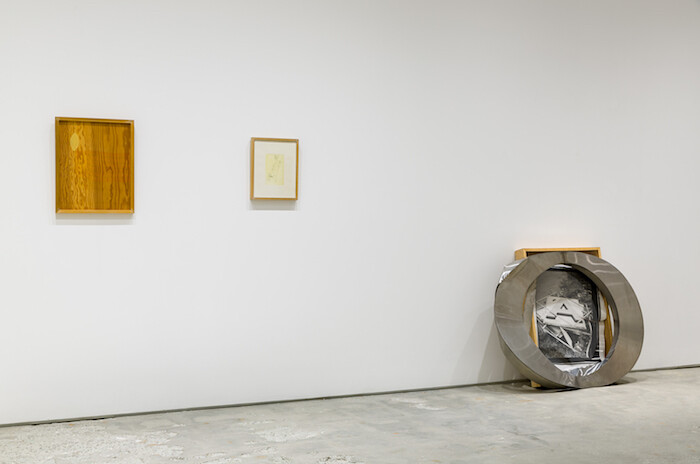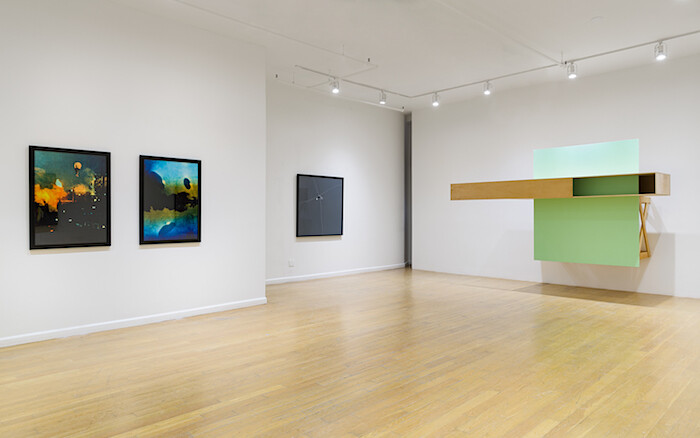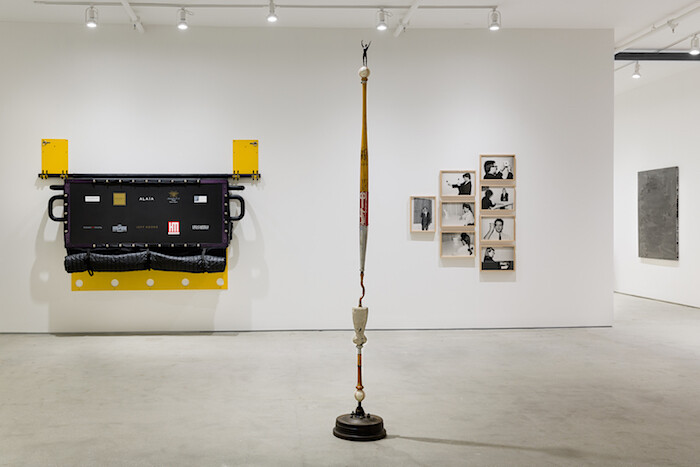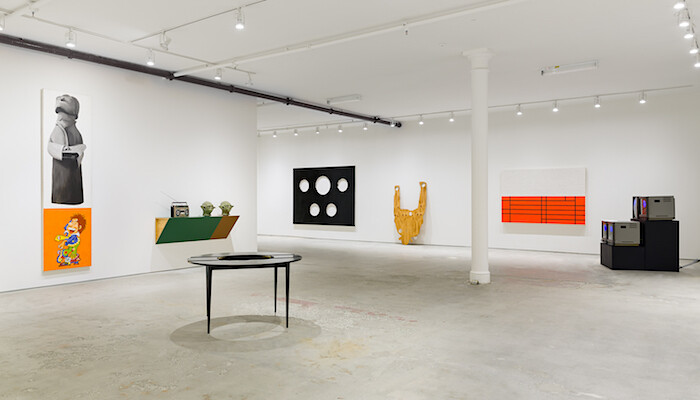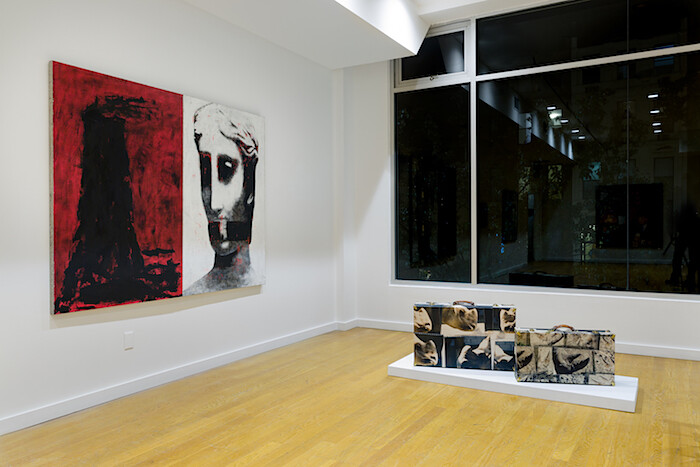October 29–December 17, 2016
The 1980s was inaugurated with the 24-hour news cycle: CNN transmitted its first broadcast on January 1, 1980. Five years later, independent curator Anne Livet—in collaboration with Nature Morte gallery founders Alan Belcher and Peter Nagy—organized an exhibition called “Infotainment.” Traveling to several U.S. cities, it featured the work of East Village artists interested in media critique and Conceptual strategies. “Every Future Has a Price: 30 Years After Infotainment” at Elizabeth Dee features 40 artists from the “Infotainment” generation, including 18 from the original traveling exhibition. Opening in late October, the show was positioned as a timely response to the news barrage of the election cycle.
In today’s post-truth hellscape, infotainment seems like a charming anachronism. With the election of Donald Trump, 1985 feels simultaneously far away and very near. The “Infotainment” artists, working under the administration of the U.S.’s first celebrity-turned-politician, Ronald Reagan, were united in their attention to authorship critiques and media theory. They eschewed the East Village tropes of Neoexpressionism and graffiti-inspired work, as well as a dogmatic approach to appropriation. But the biggest revelation in this show is the sheer variety of practices they employed, from painting and sculpture to video and printmaking.
Still, photography is a cornerstone of the show, as are figures associated with the Pictures Generation, like Richard Prince, Cindy Sherman, and Laurie Simmons. A handful of works were influenced by Prince’s techniques of re-photographing advertisements. They include Jennifer Bolande’s Cascade (1987), a Duratrans banner of a sunset that pools into a crumpled bunch on the floor, and Frank Majore’s moody, layered Cibachrome print With a Twist (1987). Rather than recirculating commercial imagery, however, Majore borrows from editorial strategies, bringing together blurred, ghostly images of a martini, a model, and a cityscape, all soaked in scarlet light. In Sarah Charlesworth’s stunning photograph Rider (1983–84), a black-and-white image of a décolletage-baring brunette is cut into the shape of a horse, set against a sea of luscious red.
The work is clearly indebted to the 1970s cutout works of Sherrie Levine, who is herself represented with an example from her “Knot Painting” series (Untitled [Golden Knots 7], 1985). Here, Levine highlights manmade plugs in plywood with metallic paint. In drawing attention to the plugs that disguise the wood’s defects, the artist extends her critique of artistic authenticity to the artifice of “natural” materials. Elsewhere, the painting selections demonstrate an eclectic range of techniques, from Neo-geo stars Ashley Bickerton, Peter Halley, and Philip Taaffe to Thomas Lawson’s brushy, pathos-ridden Don’t Hit Her Again (1981), based on a newspaper photo. In Julia Wachtel’s Free Speech (1984), the artist photorealistically depicts a black-and-white image of a folk art carving of a bible-toting preacher perched above a greeting-card cartoon. One of the exhibition’s quirkiest objects is by Meyer Vaisman, who co-founded the influential gallery International With Monument, and left the New York art world in 2000 for Barcelona. He used an inkjet printer to create his 1989 untitled painting-as-assemblage, featuring black-and-white reproductions of vases printed onto round canvases, which he then painted in acrylic. Vaisman here challenged the divide between painting and décor.
A number of artists on view are indeed underrecognized today, or have shifted course within the art world—not least Belcher and Nagy. Belcher, who decamped to his native Toronto in the mid-1980s, shows Duane Reade (Be All That You Can Be) (1984), a grid of images of drugstore products attached to mirrored plexiglas. Peter Nagy, who today runs Nature Morte in New Delhi, offers two abstract canvases (Glioblastoma and Parasitical Clown Dough, both 1987) reflecting on the “cancer” of media consumption. The dense black clusters in these paintings share the imperfect line quality of photocopies, nodding to Nagy’s earlier Xerox works of street signage. Gretchen Bender, the sole video artist in the show, died in 2004. Though there has been a recent resurgence of interest in her work, such as a 2014–15 exhibition at Tate Liverpool, she has yet to become a name on par with media pioneers like Nam June Paik. This is an oversight. Her stacked TV-monitor piece, Wild Dead (1984), feels electric in the Trump era. AT&T logos, line drawings, and the logo from David Cronenberg’s dystopian film Videodrome (1983) swirl against a deep black, punctuated by video-game shooting sounds.
We can learn a lot from the “Infotainment” artists—especially from the ones who “dropped out” of the art world. Despite its lip service to social issues, taken as a whole, this work is largely concerned with elevating critical discourse within its own community. That attitude is revealed in a 1983 interview with Nagy and Belcher, published in Thomas Lawson’s Real Life magazine. It began with the following exchange:
PN: I live breathe think sleep art.
AB: There’s nothing else to do now.
PN: It’s been ghettoized but it’s self-preservation.
AB: Everybody has their ghetto.
This statement suggests a lack of class and race consciousness, despite the fact that the “Infotainment” generation did broach topics like gender inequality and the AIDS crisis. Even so, the artists often yoked their politics to a cool aesthetic temperature, countering the hot market for contemporaries like Jean-Michel Basquiat and Julian Schnabel—whose works notably appeared as décor in the 1987 movie Wall Street. (A review of the movie by Ronald Jones, “Every Future Has a Price,” provides the title for the Elizabeth Dee exhibition.) In retrospect, it’s clear that a resistance to painterly figuration does not automatically align artists with the underclass. This historical revisionism may account for the inclusion of direct-action ephemera from artists like Group Material and Guerrilla Girls, who were not in the 1985 “Infotainment” show.
The work of “Infotainment” deserves reappraisal, but artists in the Trump era must take care not to neatly map radical strategies of the past onto the present. More importantly, they must understand that revealing the mechanisms of spectacle is no longer effective politics. As infotainment has given way to InfoWars, the public sphere has been atomized by fake news, algorithmic projection, and hateful rhetoric. 24-hour news has ceded its place to the 24-hour newsfeed. Artists today have a responsibility of understanding this new media landscape, and in positioning their works as critical interventions in a widening field of cultural production.
